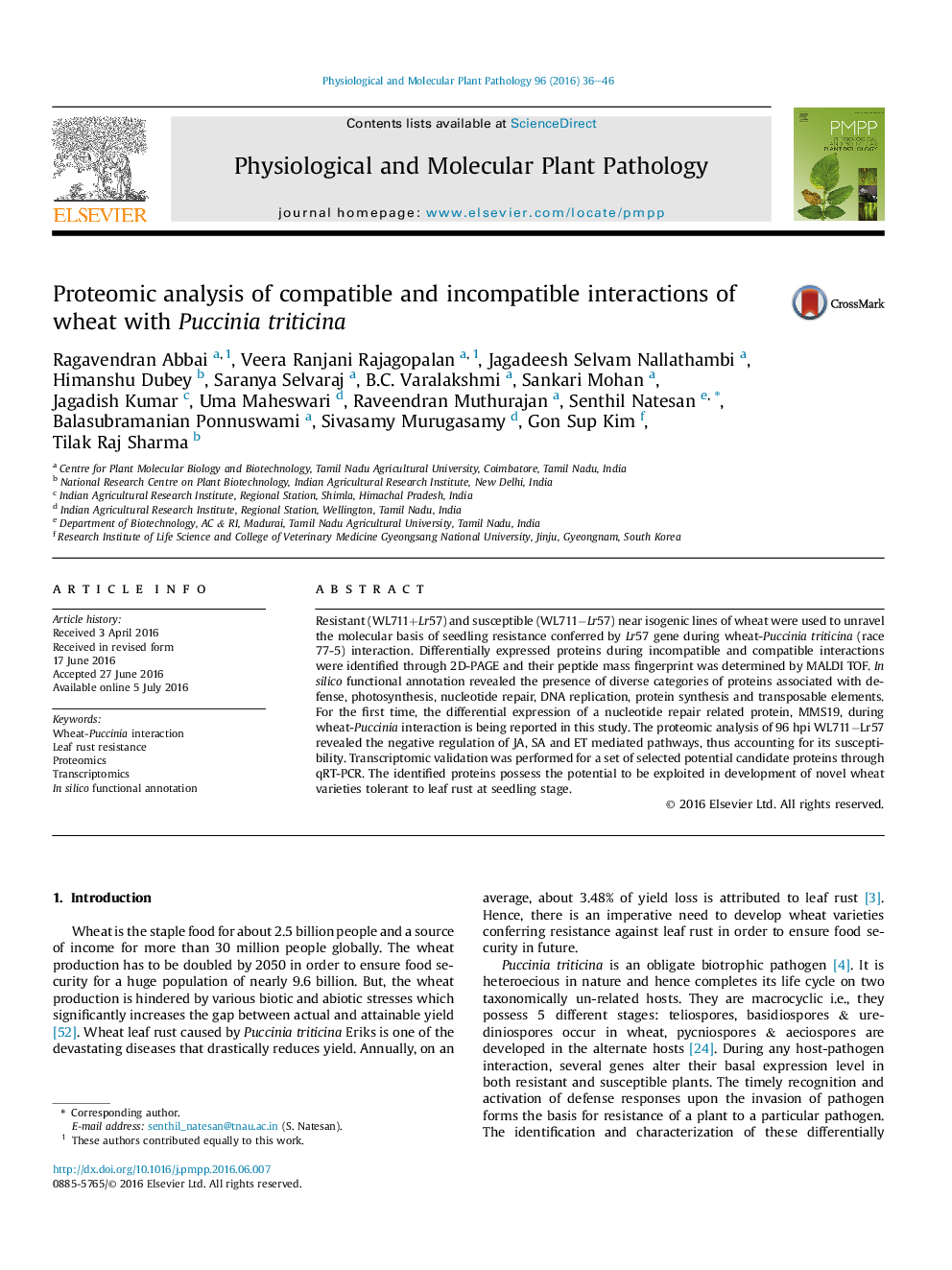| Article ID | Journal | Published Year | Pages | File Type |
|---|---|---|---|---|
| 5921032 | Physiological and Molecular Plant Pathology | 2016 | 11 Pages |
â¢Proteomics of compatible and incompatible interactions revealed differential expression of diverse categories of protein.â¢The absence of MDHAR during incompatible interaction indicates the shift in AsA - GSH pathway.â¢The differential expression of MMS19 during wheat-Puccinia interaction is being reported for the first time in this study.â¢Negative regulation of SA, JA and ET mediated pathways was observed during compatible interaction.
Resistant (WL711+Lr57) and susceptible (WL711âLr57) near isogenic lines of wheat were used to unravel the molecular basis of seedling resistance conferred by Lr57 gene during wheat-Puccinia triticina (race 77-5) interaction. Differentially expressed proteins during incompatible and compatible interactions were identified through 2D-PAGE and their peptide mass fingerprint was determined by MALDI TOF. In silico functional annotation revealed the presence of diverse categories of proteins associated with defense, photosynthesis, nucleotide repair, DNA replication, protein synthesis and transposable elements. For the first time, the differential expression of a nucleotide repair related protein, MMS19, during wheat-Puccinia interaction is being reported in this study. The proteomic analysis of 96Â hpi WL711âLr57 revealed the negative regulation of JA, SA and ET mediated pathways, thus accounting for its susceptibility. Transcriptomic validation was performed for a set of selected potential candidate proteins through qRT-PCR. The identified proteins possess the potential to be exploited in development of novel wheat varieties tolerant to leaf rust at seedling stage.
Graphical abstractDownload full-size image
